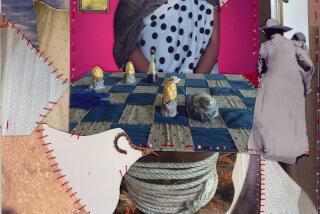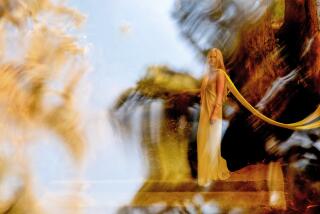Book Review : An Analysis of Dreams: Stay Awake for This One
The Dreaming Brain by J. Allan Hobson (Basic Books: $22.95; 272 pages)
If you have ever wondered what dreams are, âThe Dreaming Brainâ will tell you, but you will have to pay attention. This book presents a coherent, experimental, non-Freudian theory of dreaming that is full of evidence, argument and passion. But though it is well written, this is not an easy book.
âIn our dreams, we all become writers, painters and film makers, combining extraordinary sets of characters, actions, and locations into strangely coherent experiences,â writes J. Allan Hobson, a professor of psychiatry at the Harvard Medical School and director of the Laboratory of Neurophysiology at the Massachusetts Mental Health Center.
But his book has a humanistâs touch. It is laced with quotes from poets and philosophers as well as from researchers and psychologists. There is much to choose from. Dreaming has been around for a long time and has been puzzling people all the while. Scientists have only recently gotten into the act.
At the head of one chapter we find that Rene Descartes wrote, âI am accustomed to sleep and in my dreams to imagine the same things that lunatics imagine when awake.â Hobson examines this point in several places.
Physiologically Based
From the outset, Hobson argues that dreams are physiologically based, and he skirts the mind-body problem (how do the mind and the brain interact?) by asserting that they are the same:
âThe most remarkable property of mind--an aspect that is most essentially human, the capacity to imagine, to hope, and to create--is physically given and physically based,â Hobson writes.
âI use the hybrid term brain-mind to signal my conviction that a complete description of either (brain or mind) will be a complete description of the other (mind or brain). At some future time, the two words may well be replaced by one,â he says.
Obviously such a theory must account for the myriad thoughts, rational and irrational; emotions; shades of awareness, and nuances of experience that are familiar to us. Hobsonâs theory does that and more:
âThe brain is neither a closed system with its own set of fixed determinacies nor a slave to information received from the outside world. It is a dynamic and self-sustaining organ capable of generating its own information. It is designed to deal with the external world by having ideas about the external world. The brain therefore constantly imposes its own truth upon the external world.â
Before getting to his theory of dreaming, Hobson gives a masterful tour of the history of dream research, particularly in the 19th and 20th centuries, when two paths emerged: the neurological, following the work of Santiago Ramon y Cajal; and the psychological, following Freud, which sees dreams as disguised expressions from the unconscious, requiring an interpreter to explain.
Hobson disputes the Freudian view, though, he notes, âPsychoanalytic dream theory has gained a strong hold upon both popular and professional thinking; and most laymen and many professionals assume that psychoanalysis is scientifically sound--or at least medically reputable.â
Hobson proposes that no interpreter is necessary, that there is no âlatentâ content lurking beneath the âmanifestâ content of a dream, that dreams are what they seem to be.
Personal Meaning
âThe view of dreams as transparent with respect to personal meaning changes radically the approach to dreaming taken in self-exploration or psychotherapy,â Hobson writes. His approach, which he calls activation synthesis, âregards the dream process as more progressive than regressive; as more positive than negative; as more creative than destructive. In sum, as more healthy than neurotic.â
I have quoted several passages from this book at length because they show the authorâs elegant style both in thought and expression. It would be hard to express his ideas better than he does in the introductory chapter.
âIt is my aim in this book to present a psychophysiological theory of how dreams are formed,â Hobson writes, âspecifically, that the form of dreams is related to the form of brain activity in sleep; and that the brain is first turned on (activated) during sleep and then generates and integrates (synthesizes) its own sensory and motor information.â
Hobson explains the laboratory finding that thinking goes on all night. Dreams appear to be part of the landscape, whose purpose is to review yesterdayâs events and help plan for tomorrow.
As in most fields of research, the structure of a theory has emerged, but there are many questions to be answered, some minor and some not so minor.
More to Read
Sign up for our Book Club newsletter
Get the latest news, events and more from the Los Angeles Times Book Club, and help us get L.A. reading and talking.
You may occasionally receive promotional content from the Los Angeles Times.






